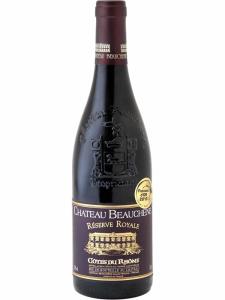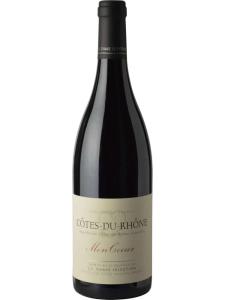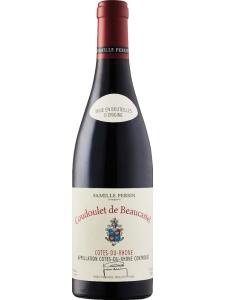Cotes du Rhone is a region-wide appellation for red, rosé and white wines covering the length and breadth of the Rhone Valley in eastern France. It includes more than 170 villages, following the course of the Rhone river southwards for 125 miles (200km) from Saint-Cyr-sur-le-Rhone to Avignon. A small proportion of the appellation's wines are white, but the classic Cotes du Rhone wine is a fruity, middleweight red blend based on Grenache, Syrah and Mourvedre.
The Cotes du Rhone appellation was introduced in November 1937, to provide a catch-all title for good-quality Rhone wines from the valley's lesser-known and less-prestigious viticultural areas. Although it does not hold the prestige of the Rhone's more famous names (Chateauneuf, Cote Rotie, Hermitage), the Cotes du Rhone title has risen to become one of France's most popular and famous wine appellations. In 1966, it was joined by the complementary Cotes du Rhone Villages appellation – granted exclusively to those Rhone villages producing wines of consistently high quality. (© Wine-Searcher.com)
(© Christophe Grilhé)
Some Cotes du Rhone wines are of extremely high quality. Some of the appellation's finest (and most expensive) wines command prices of more than $100 per bottle. Such examples include "La Bosse" by Domaine de la Vieille Julienne, and "Chateau de Fonsalette" by Chateau Rayas. Both of these come from producers based in Chateauneuf-du-Pape. Other notable examples come from the new wave of quality-focused winemakers, or from high-quality vineyards that fall outside the boundaries of the more famous appellations.
The Rhone Valley climate varies measurably from north to south. The northern Rhone climate is cooler and more continental than the south – influenced more by the Alps than the Mediterranean. As a result, northern Cotes du Rhone wines tend to be slightly more structured and "serious" than those from the south. The Mediterranean-influenced south enjoys a warmer, more stable climate with hot summers and mild winters. This contributes to richer, brighter, higher-alcohol wines.
Grenache, Syrah and Mourvedre grapes form the core of most red Cotes du Rhone wines. The three work so well together that the blend has been keenly welcomed in other warm-climate wine regions around the world (see GSM). Here in the Rhone, Grenache almost always dominates the blend, particularly in the southern half of the Valley, where the vast majority of Cotes du Rhone wines are made. Syrah contributes structure and spicy notes, while Mourvedre brings its dark, chocolatey notes and intense color.
The Rhone Valley's north-south divide is reflected in Cotes du Rhone wine styles. It is even taken into consideration in the official appellation laws, which stipulate that Grenache should comprise at least 40 percent of any red wine made south of Montelimar – the transition point between north to south. Those from the north contain more Syrah, and lean more towards a cool-climate style, with good structure and notes of black cherry and fresh pepper (obvious examples include those from Guigal and Chapoutier). Those from the south favor Grenache, and a warmer-climate style – higher alcohol and abundant fruit flavors of stewed blueberry, raspberry and plum.
Ten other varieties are sanctioned for use in red and rosé Cotes du Rhone wines, although they rarely represent any significant part of the blend. These are: Carignan, Cinsaut, Counoise, Muscardin, Vaccarese, Picpoul Noir, Terret Noir, Grenache Gris and Clairette.
The typical white Cotes du Rhone Blanc is relatively full-bodied, with notes of candied citrus fruits, acacia, herbs, straw, wax and possibly a hint of honey. The principal grapes used in Cotes du Rhone white wines are Grenache Blanc, Clairette, Marsanne, Roussanne, Bourboulenc and Viognier. Interestingly, Ugni Blanc (better known for its role in Cognac) may also be used, as may Picpoul Blanc – of Picpoul de Pinet fame.
Supplementary information about Rhone Valley wines can be obtained from the region's trade body, Inter Rhone.




